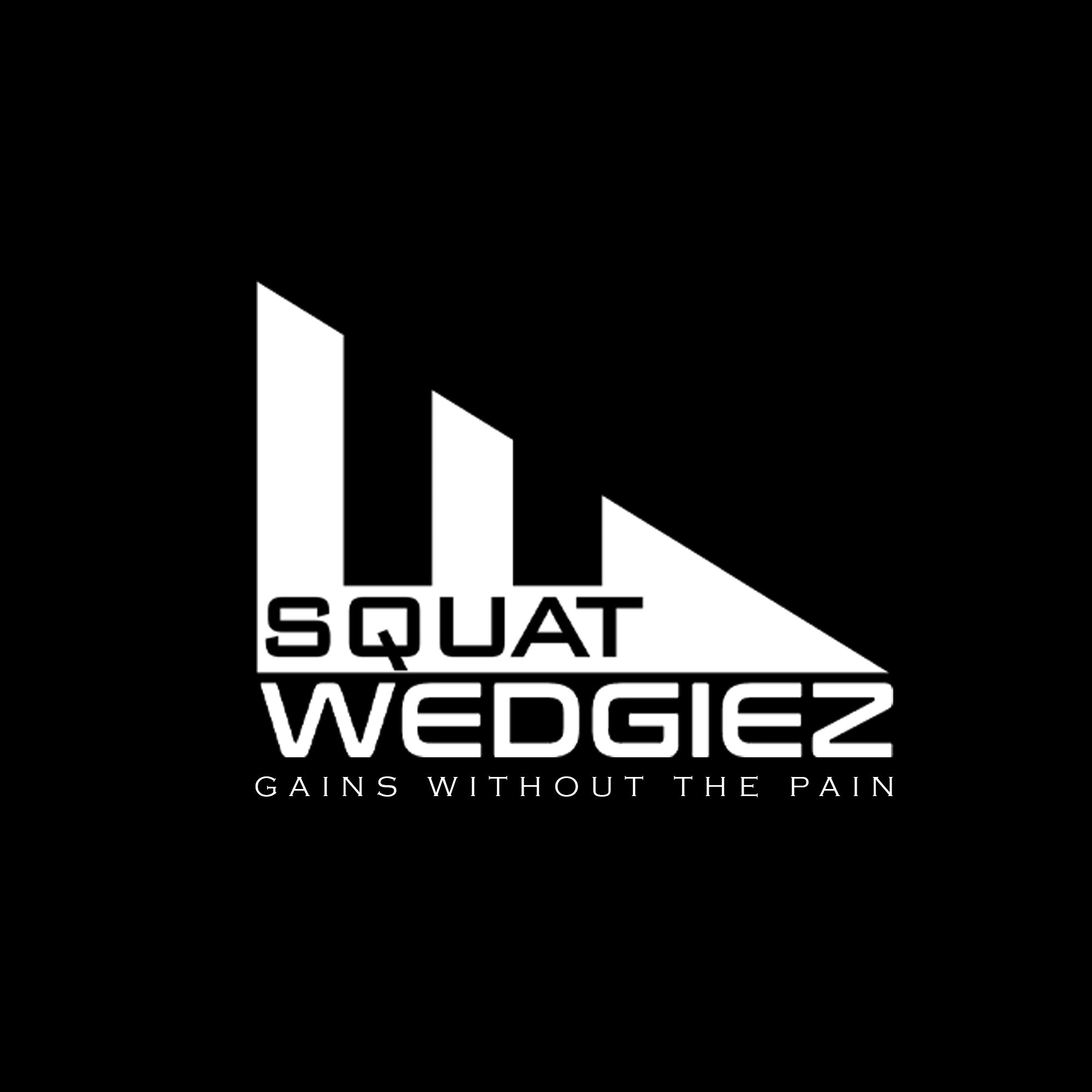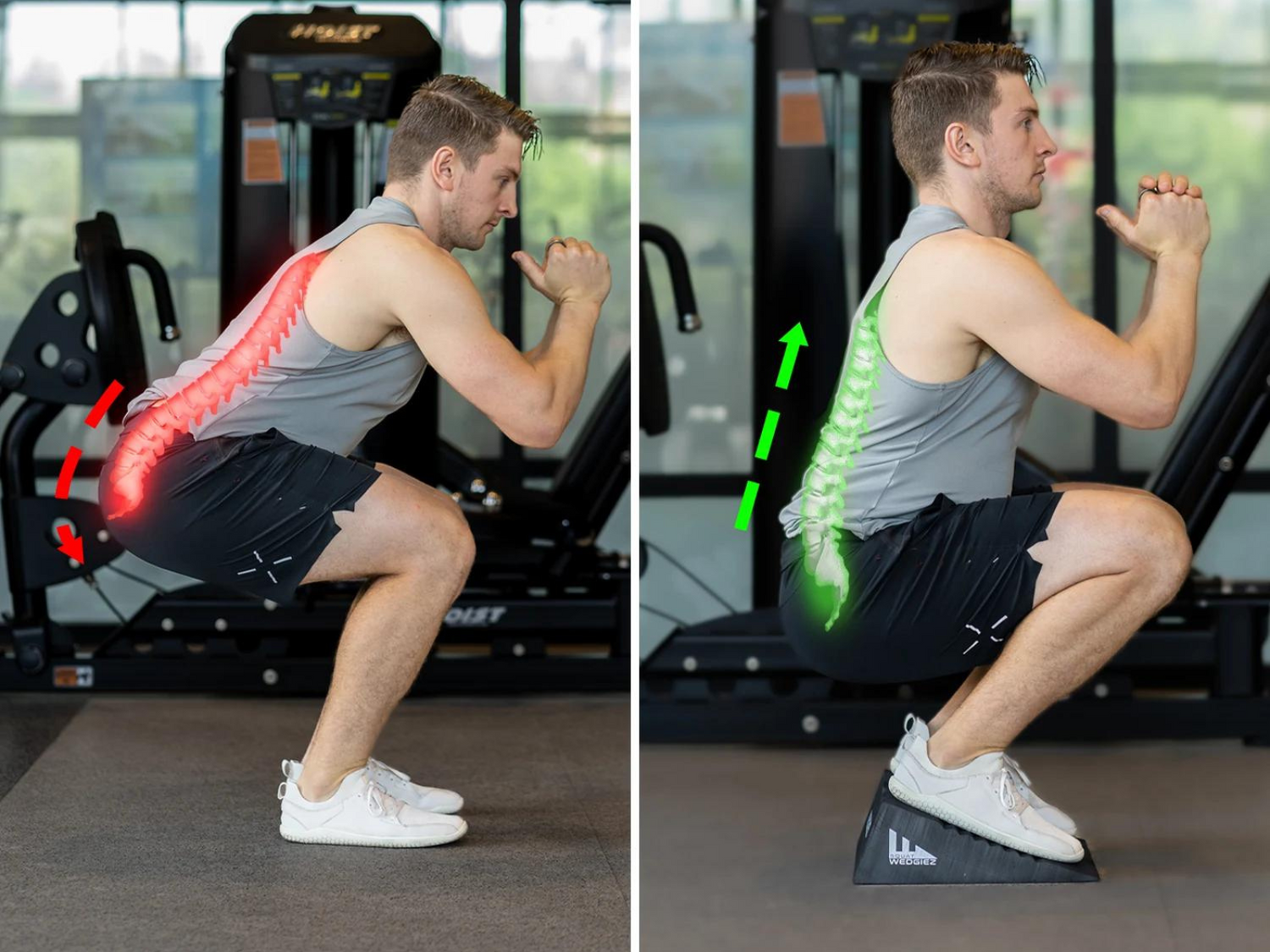Main Points
- The use of squat wedges and slant boards can alleviate lower back tension during squats.
- Research suggests heel elevation reduces strain on the lower back by keeping the torso more upright
- Recommended heel elevation angle is between 10-20 degrees, with a 15-degree slope being ideal for most people.
Everything Changed That Day
I stared at myself in the mirror with 315 pounds on my back. Four reps down, one to go. I took a deep breath and squatted until my butt went below my knees. I got to the bottom and pushed through the floor as hard as possible but didn't go anywhere. So my hips shot backward, and my torso came forward.
I could feel my back take on the weight, but I had no choice but to push through and finish the rep. I stood tall and racked the weight. I took two steps from the squat rack before I felt a sharp pain in my lower back. Immediately, I dropped to the floor.
I am unsure how long I was on the ground, but it felt like a lifetime. My back was never the same after that day…At 18 years old, I suffered a bulging disc in my L4-L5, and my dream of playing football at East Carolina University was over.
Fast forward to myself at 30 years old.
I feel better than ever, but it hasn't been easy. I can still remember when I had a back spasm trying to tie my shoe. I could barely move for three days.
So I know how much back pain sucks. It is debilitating and robs you of your life. But it isn't a death sentence. You can reduce and prevent pain with proper training. It won't happen overnight, but if you stay consistent, you can make back pain a thing of the past.
What Is A Wedgie?
Today, I will talk about one of the tools I have used for the last ten years to help me get out of back pain.
Can you take a guess of what it is?
It is a wedgie!
Now, I am not talking about the ones you used to get in high school🙃. Instead, I am talking about squat wedges and slant boards.
Scientific Backing
A study published in the Journal of Sports Science examined the effects of heel elevation during squats. The researchers found that squat wedges significantly reduced forward torso lean during barbell back squats (1).
"This study indicates that from a perspective of spinal safety, it appears advantageous for novice weight trainers to perform back squats with their heels elevated.."- Sayers, et al. 2020
When your torso leans forward excessively in a squat, you place more weight on the lower back compared to squatting with an upright torso (2). This is exactly what happened to me when I was squatting at 18 years old. But I didn't hurt myself on the first couple of reps.
My back gave out on the last rep, which made me realize that our muscles have different thresholds. For example, our legs can handle much more weight than our lower back. Thus, when we squat, we want our legs to take on the weight, not our lower back.
What's The Solution?
A simple fix would be to elevate your heels while squatting to keep your torso more upright. Two things will happen when you elevate your heels on a squat wedge.
- You change the shape of your foot to a supinated, plantarflexed position (pointed foot), which will have an upstream effect on your legs and pelvis that will push your center of mass backward.
- You create more space for your knees to travel over your toes, which will load your legs more.
When these two things occur, you put yourself in a better position to keep your torso upright under load. Regarding heel elevation, I recommend you elevate your whole foot because it will allow your foot to function optimally. Take a look at the photo below to see this in action.

What Angle Should I Elevate My Heel?
For most people, a slope between 10-20 degrees is ideal. As the angle becomes steeper, your torso will stay more upright, and more tension will be placed on your thighs and knee joints. With everything in life, more isn't always better, and heel elevation is no exception to this rule.
For the last 10 years, I have used a 15-degree slope the most because it allows for an upright torso without overloading the knee joints. Plus, it will have more carryover to your squat pattern compared to a steeper wedge.
However, if you had minimal hip and ankle mobility or wanted to develop your thighs only, you could use a 20-degree slant board. I don't see the need to go above 20 degrees because it will push your center of mass too far forward and not allow you to load your hips.
But if you use something steeper, ensure your knees are ready to handle the extra load. Remember, every muscle has a threshold before it gives out. So it is best to stress the muscle enough to get stronger but not at the risk of injury.
Conclusion
Squat wedges and slant boards can significantly reduce tension in your lower back in the barbell back squat by keeping your torso upright under load. The barbell back squat is not dangerous.You don't always need to elevate your heels, especially if you have adequate mobility and can perform it pain-free. But for others, like myself, I prefer squat wedges because it places all of the tension in my legs and not my lower back.
In our next blog post, we will examine which muscles heel-elevated squats target and how a steeper slant board influences that.
Citations
1) Sayers MGL, Bachem C, Schütz P, Taylor WR, List R, Lorenzetti S, Nasab SHH. The effect of elevating the heels on spinal kinematics and kinetics during the back squat in trained and novice weight trainers. J Sports Sci. 2020 May;38(9):1000-1008. doi: 10.1080/02640414.2020.1738675. Epub 2020 Mar 17. PMID: 32183616.
2) Anbarian M, Rajabian F, Ghasemi M H, Heidari Moghaddam R. The Effect of the Heel Wedges on the Electromyography Activities of the Selected Lower Back Muscles During Load Lifting. Iran J Ergon 2017; 5 (3) :12-21




Leave a comment
This site is protected by hCaptcha and the hCaptcha Privacy Policy and Terms of Service apply.